1
HOME > Tips & Advice >
HOW TO CHOOSE THE RIGHT PAIR OF SOCKS
Written by Ivan Yaskey in Tips & Advice on the 10th November 2021
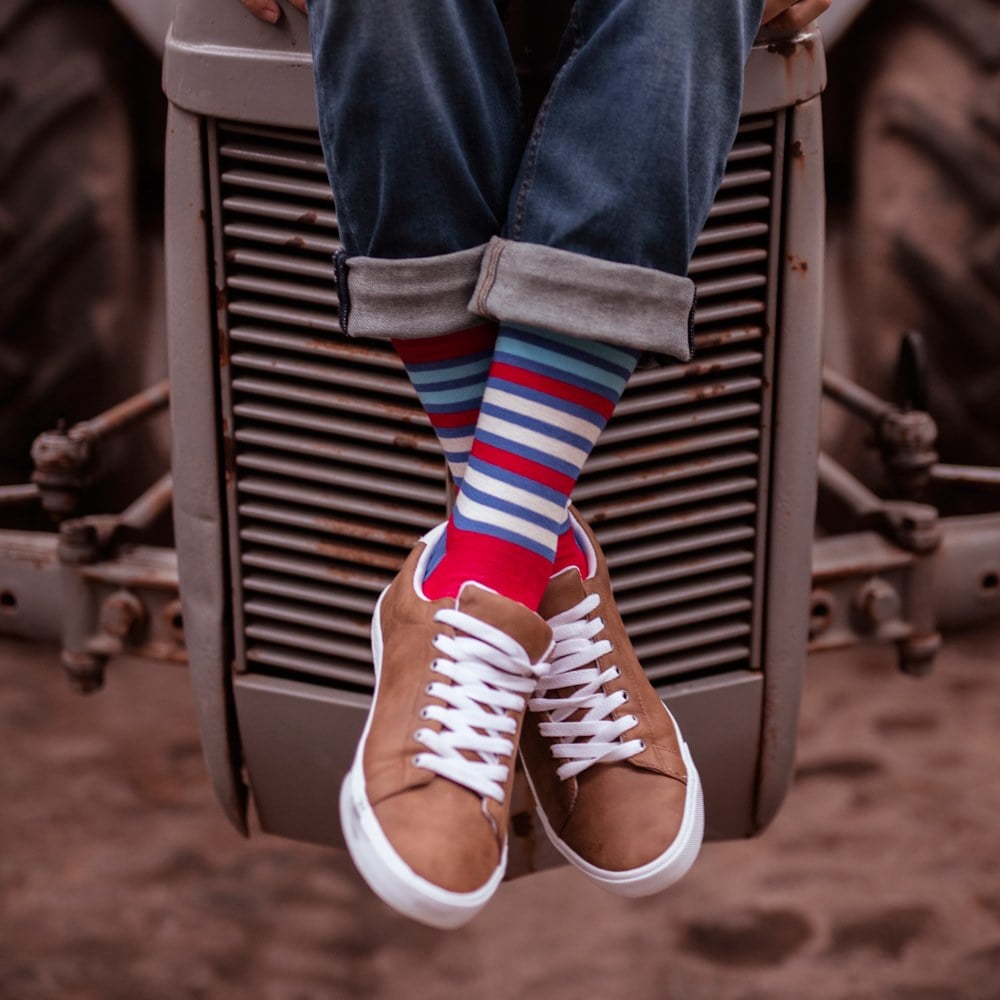
How frequently do you think about your socks? Be honest. You likely slip on a pair each morning and rarely acknowledge them from that point, unless they bunch up or don’t provide enough coverage.
Still, one pair of socks is never a one-size-fits-all solution. What you wear to the office doesn’t offer the coverage or comfort for the gym later. The same applies if you intend to hike some trails. Then, you might be interested in a pattern at points – but also know that this style comes across as too extreme for formal occasions.
Over the past few years, the menswear world has discovered the joy of statement socks. Still, whether you’re thinking about form, function, or personal style, socks create a true baseline of comfort. Your pair needs to stay in place, cushion at just the right moments, and let your feet breathe based on the activity and environment. At the same time, there’s the question of social convention and dress code: Although higher trouser hems mean some men are going without socks completely, it’s still a minor faux pas to have your ankle or lower calf show when the material gathers around your shoe, or you wear a too-short silhouette.
So, as you seriously factor socks into your daily routine, here’s what to consider:
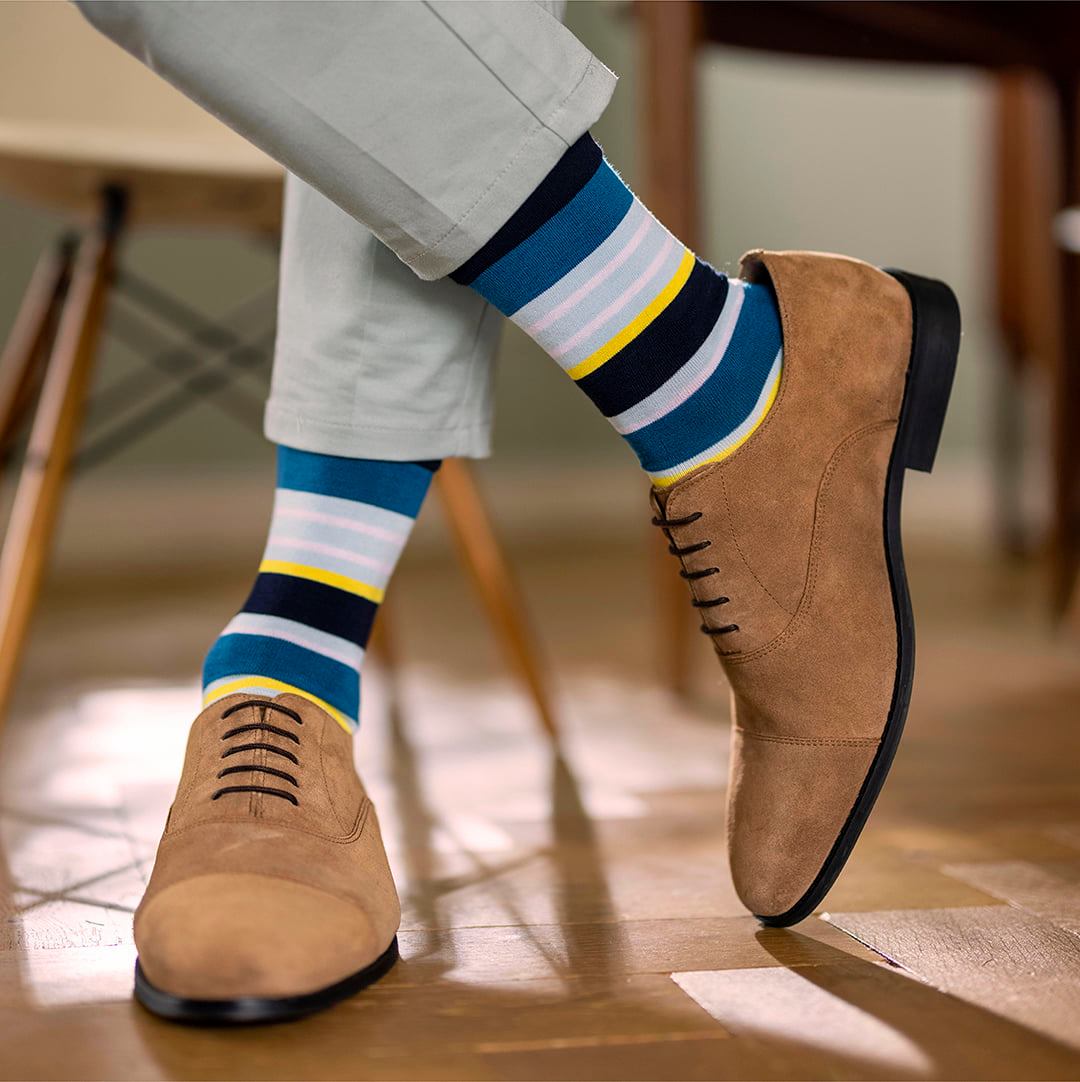
Height
You’ll come across four basic heights when searching for men’s socks. These include no-show, designed to stay within your shoes; ankle, which, as the name implies, hits right at the ankle; crew, which extends partially up your calf; and knee-length, which goes all the way up.
Among men’s socks, athletic types lean more toward ankle and no-show heights, unless they’re intentionally providing some kind of compression support. Your everyday and certain technical socks provide more coverage with a crew height. Dress socks, to prevent your skin from showing between your shoes and trouser leg offer a crew or even knee-length height. Statement socks use square inches to their advantage to showcase a pattern and often fall into the latter group.
Even if you’re deciding between cotton socks, height serves as a general guideline for activity and environment.

Fit
Fit, in this case, pertains to two factors: How well the material stays up and the support and cushioning it provides.
A looser sock creates a generally uncomfortable experience. For starters, the material slips down, bunching around your ankle or the top of your boot. Not only does this expose your calf, but it can contribute to blisters on the skin under your shoe due to the friction created. Or, you get a sensation that something’s stuck around your heal.
Then, aspects like cushioning provide padding and a light degree of impact absorption. This aspect works in conjunction with your hiking boots or trainers to support your activity. A compression fit – more common with active socks – helps the shaft stay up and in place, and offers moderate support to your muscles.
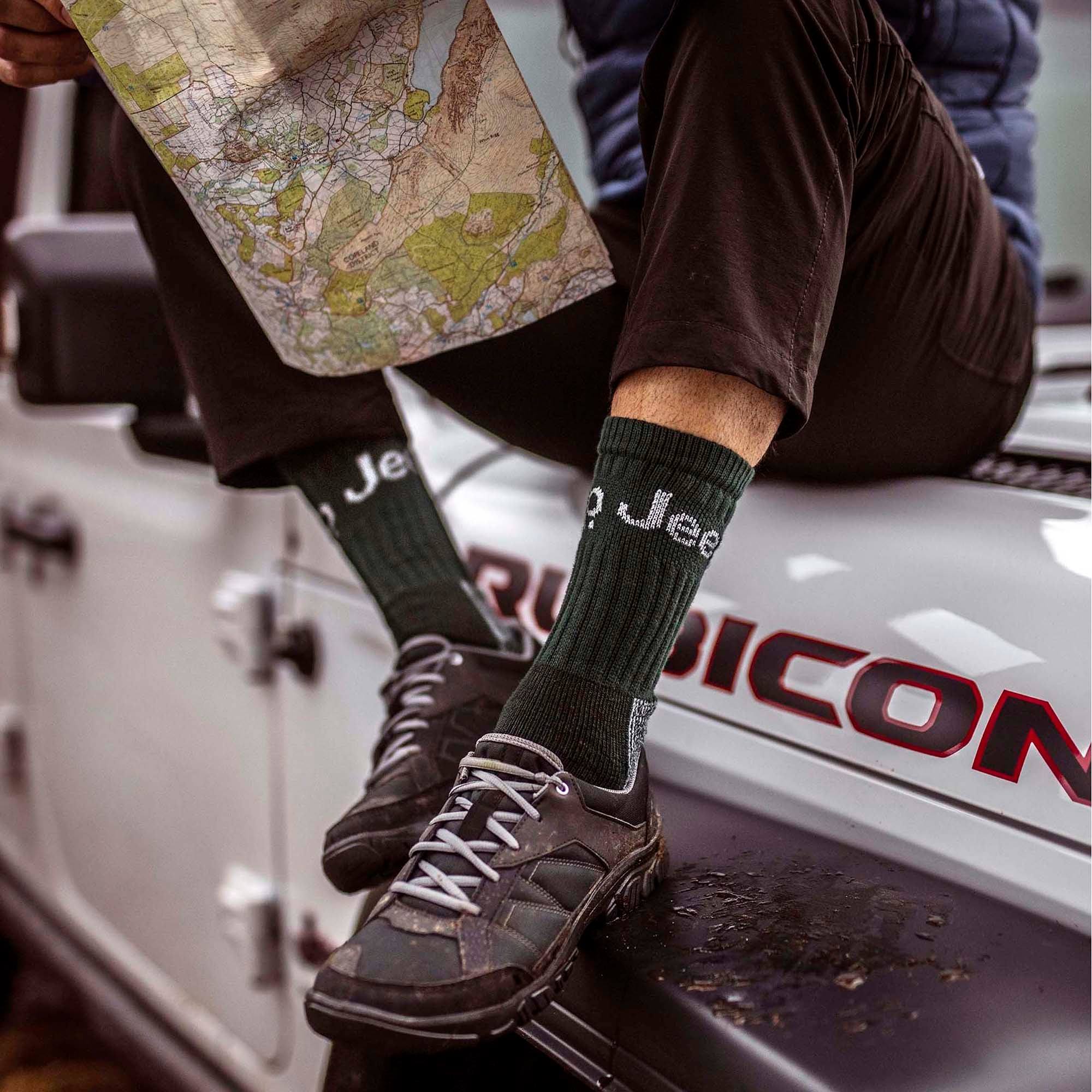
Coordination
What are you wearing? While most might not build an ensemble from their socks – however, with a statement pattern, this is a valid approach – you want to think of the colour and material in relation to your trousers and secondarily your shoes.
When in doubt, start with your trousers first. For formal and even smart-casual occasions, your socks play a secondary role. So, if you’re sporting black or dark-coloured trousers, select black or a similar shade for your sock. Here, too, follow the old rule: Don’t wear black socks with brown shoes, and pick your footwear accordingly.
With jeans and chinos, you have more freedom. Here, those white athletic socks won’t seem like as great of a misstep. You also have the opportunity to roll up the cuffs a bit to highlight the pattern covering the length of your sock.
Then, think about the sock’s thickness in relation to your footwear. With hiking shoes and athletic trainers, this is a no-brainer: Cushioning in the right places enhances what your shoes deliver. With oxfords or a similar style, on the other hand, this can be overkill and may make the already slim-fitting silhouette feel tight or look bulky.
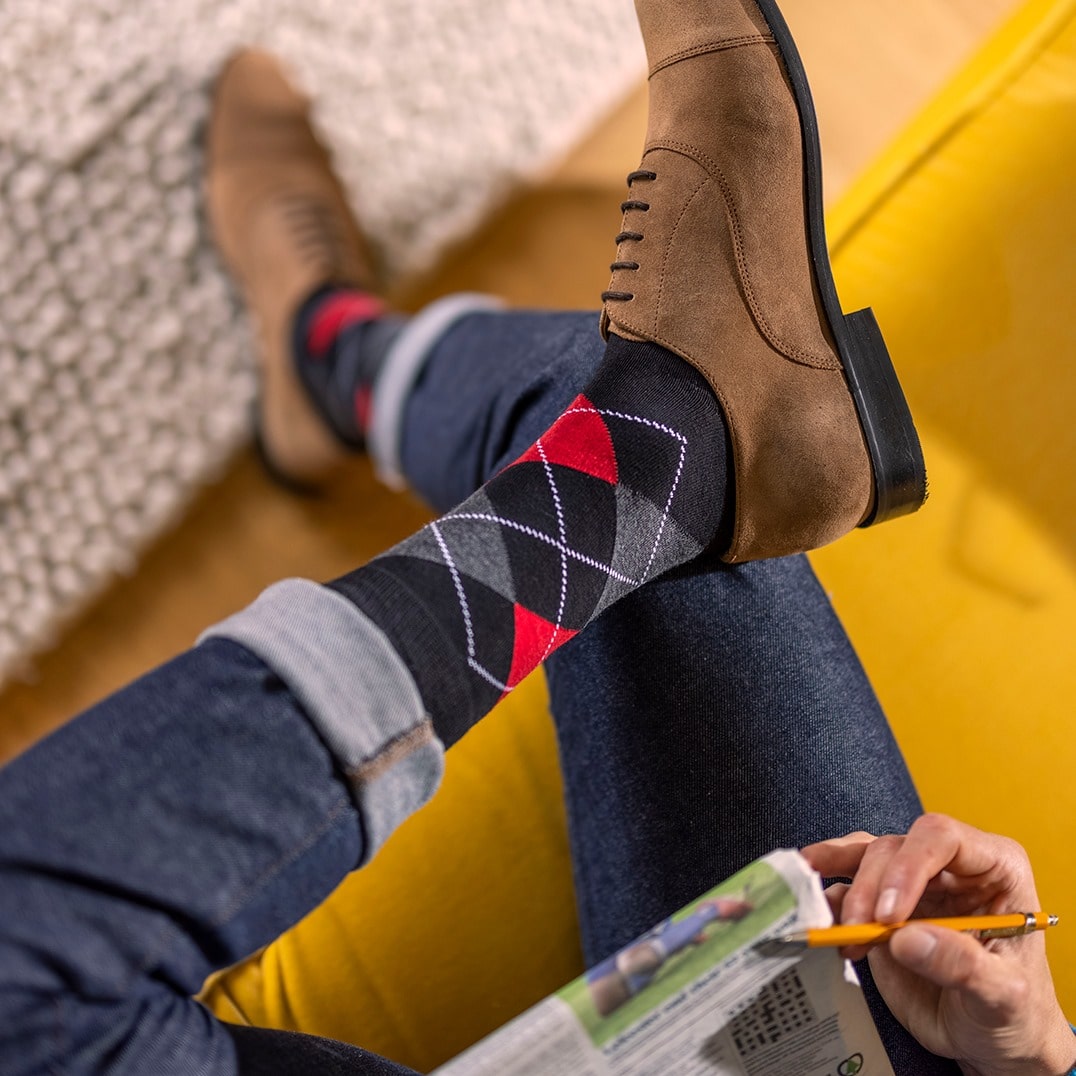
Materials and Features
At a minimum, your socks need to let your feet breathe and feel comfortable for the task at hand. These aspects, while straightforward at face value, bring in multiple factors:
Materials: We think of cotton as the default for casual, everyday socks and something synthetic or nylon for a dressier pair. Beyond this, wool has taken off for its natural moisture-wicking and warmth-retaining properties in hiking and other active pursuits. A newcomer that’s already making an impact, bamboo brings together the best of both worlds – soft and lighter weight for everyday wear yet also naturally moisture wicking and odour resistant.
Features: Do you need support – and where? Here’s where features like padding and compression prove to be essential. Then, especially where active socks are concerned, you’ll want to seek out breathability, odour control, and moisture-wicking properties to control perspiration and lessen potential chafing.
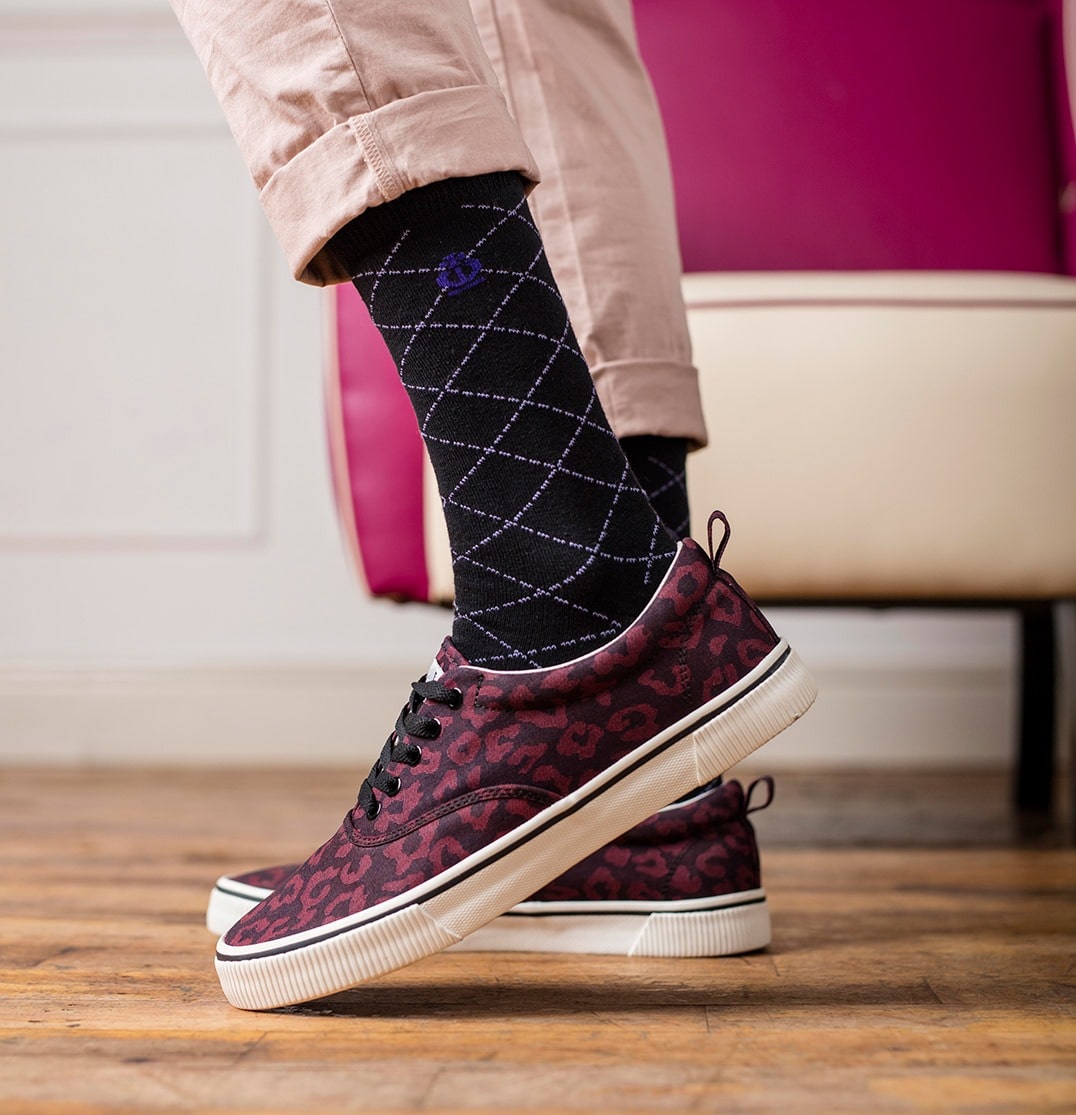

Trending
2
3
4
5
6
7
8
9
10










